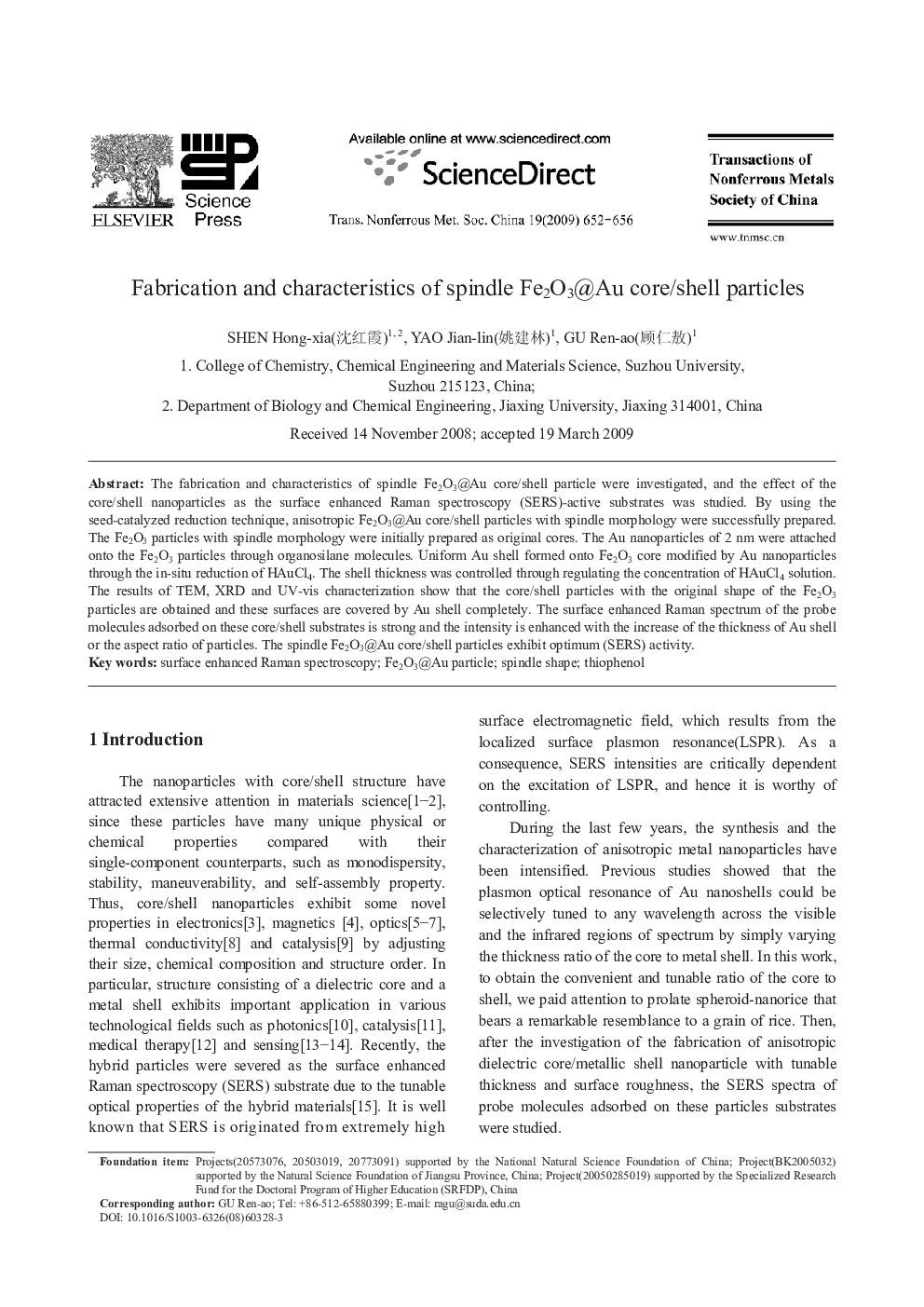| Article ID | Journal | Published Year | Pages | File Type |
|---|---|---|---|---|
| 1639396 | Transactions of Nonferrous Metals Society of China | 2009 | 5 Pages |
Abstract
The fabrication and characteristics of spindle Fe2O3@Au core/shell particle were investigated, and the effect of the core/shell nanoparticles as the surface enhanced Raman spectroscopy (SERS)-active substrates was studied. By using the seed-catalyzed reduction technique, anisotropic Fe2O3@Au core/shell particles with spindle morphology were successfully prepared. The Fe2O3 particles with spindle morphology were initially prepared as original cores. The Au nanoparticles of 2 nm were attached onto the Fe2O3 particles through organosilane molecules. Uniform Au shell formed onto Fe2O3 core modified by Au nanoparticles through the in-situ reduction of HAuCl4. The shell thickness was controlled through regulating the concentration of HAuCl4 solution. The results of TEM, XRD and UV-vis characterization show that the core/shell particles with the original shape of the Fe2O3 particles are obtained and these surfaces are covered by Au shell completely. The surface enhanced Raman spectrum of the probe molecules adsorbed on these core/shell substrates is strong and the intensity is enhanced with the increase of the thickness of Au shell or the aspect ratio of particles. The spindle Fe2O3@Au core/shell particles exhibit optimum (SERS) activity.
Related Topics
Physical Sciences and Engineering
Materials Science
Metals and Alloys
Authors
Hong-xia SHEN, Jian-lin YAO, Ren-ao GU,
